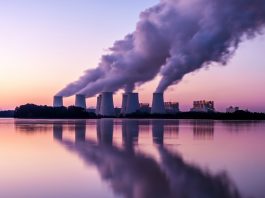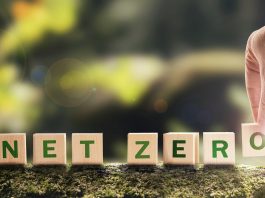The U.S. Department of Energy (DOE) has invested $39m to support 18 projects that will develop building materials for decarbonisation.
On 13 June 2022, the U.S. DOE announced $39m in funding for 18 projects seeking to develop technologies that can transform buildings into net carbon storage structures. These projects will be led by the DOE’s Advanced Research Projects Agency-Energy (ARPA-E). Selectees for the Harnessing Emissions into Structures Taking Inputs from the Atmosphere (HESTIA) programme will prioritise overpowering the barriers associated with building materials for decarbonisation, including scarce, expensive, and geographically limited building materials.
Decarbonisation goals for the HESTIA programme reflect President Biden’s intention to achieve zero emissions by 2050 and his aim to increase the total amount of carbon stored in buildings to create carbon sinks. This means that more carbon will be absorbed from the atmosphere than what is released during the construction process.
“There is a huge, untapped potential in reimagining building materials and construction techniques as carbon sinks that support a cleaner atmosphere and advance President Biden’s national climate goals,” said Jennifer M. Granholm, U.S. Secretary of Energy. “This is a unique opportunity for researchers to advance clean energy materials to tackle one of the hardest to decarbonise sectors that is responsible for roughly 10% of total annual emissions in the U.S.”
Greenhouse gas emissions related to material manufacturing and construction
Greenhouse gas (GHG) emissions associated with material manufacturing and construction, renovation, and disposal of buildings at the end of their service life are concentrated at the start of a building’s lifetime, making them essential to address given the urgency of meeting national energy and environmental challenges.
The following teams, which are represented by universities, private companies, and national laboratories, intend to develop and demonstrate building materials for decarbonisation, as well as whole-building designs that exhibit net carbon-negative outcomes:
National Renewable Energy Lab (Fairbanks, AK)
The laboratory will develop cost-effective, bio-based insulation. The team will combine cellulose with mycelium, the root network of fungi, to create a new class of high-performing, carbon-capturing, and storing foams and composites. (Award amount: $2,476,145).
Purdue University (West Lafayette, IN)
The university will develop a transformational ‘living’ wood with the strength of steel, a self-healing capability, and combined carbon-sequestering benefits from wood and microbes. Manufacturing living wood is inherently scalable and will promote healthy forest management and a national bio-economy. (Award amount: $958,245).
SkyNano LLC (Knoxville, TN)
The company will develop a composite panel that contains bio-derived natural fibres that exhibits excellent mechanical and functional properties while maintaining a carbon-negative footprint. The technology will enable interior building surfaces to be carbon negative. (Award amount: $2,000,000).
University of Pennsylvania (Philadelphia, PA)
The university will design a carbon-negative medium-size building structure by developing a high-performance floor system with maximised surface area for carbon absorption, using a novel carbon-absorbing concrete mixture as a building material, 3D printing the parts with a novel concrete mixture and additional bio-based carbon-storing materials. (Award amount: $2,407,390).
In addition to the HESTIA programme, ARPA-E recently announced $5m in funding through the HESTIA exploratory topic for two universities. These institutions are currently working to develop the necessary life cycle assessment tools and frameworks associated with building materials for decarbonisation to create net carbon storage structures.









